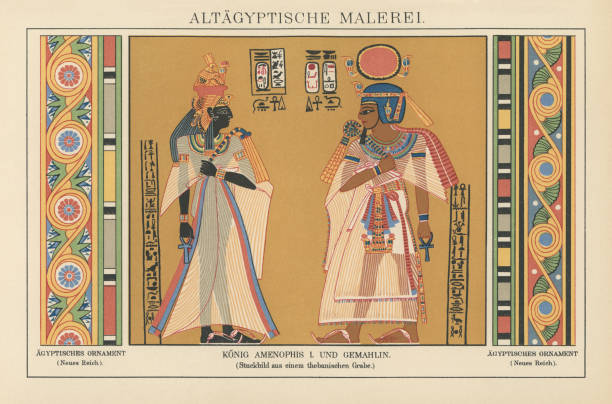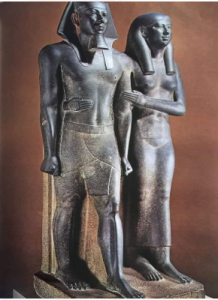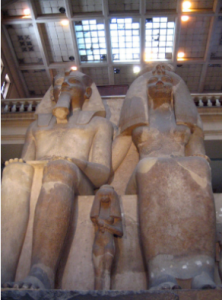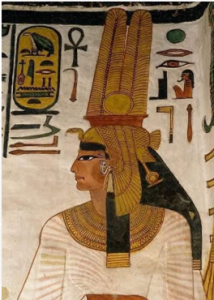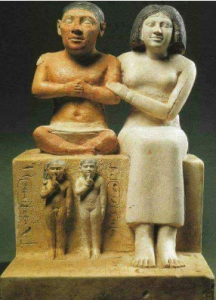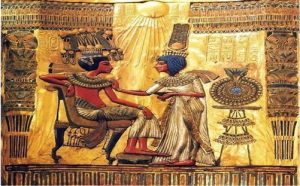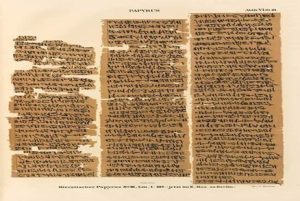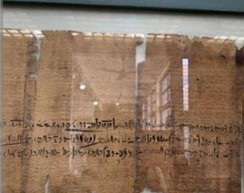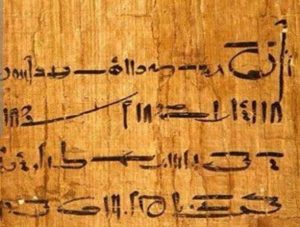Women and Love in Ancient Egypt
In ancient Egypt, women held a distinguished position as mothers, wives, and beloved companions. A wise saying proclaimed “Educate a woman so that the people can be educated.” The sage “Ptahhotep” in advice to his son, emphasized the importance of cherishing one’s wife: “Love your wife, care for her, feed her well, clothe her back and neck, fill her heart with joy all the days of her life. A beautiful woman is not always kind, but a kind woman is always beautiful. If you doubt a woman, do not make her your wife. But if you have taken her as a wife, do not doubt her.”
Women were often described with endearing terms like
“mistress of the breeze,” “mistress of joy,” and “shining like the sun.” And we see in Chester Beatty Papyrus that it describes a woman as being equal to a man (due to the myth of Isis who equated the two sexes). He refers to women of his age as his sisters, to older women as his mother, and to younger women as his daughter or sister, meaning that all women are respected as if they were part of his family.
Love
The most beautiful words that reach to the heart, are those spoken from the heart of a lover. They come from a heart to another. King Ramses II famously declared his love for his wife “Nefertari” at the small temple of Abu Simbel: “I have built this temple for the beautiful one for whom the sun shines.” From the Old Kingdom, we find numerous depictions of love, such as the statue of King Menkaure and his queen. The most beautiful view of love in its highest sense is found with the dwarf “Seneb” and his beautiful wife who embraces him in a wonderful statue of the Egyptian family. In the New Kingdom, the love between “Tut Ankh Amun” and his wife is evident in their portraits, where their eyes convey deep affection. -Depicting the love between king Menkaure and his wife
Love between Amenhotep III and his wife Ti
Queen Nefertari (the woman for whom the sun shines
Depicting the love between the dwarf Seneb and his wife embracing him
A scene of love between “Tutankhamun” and his wife (the look of love in their eyes)
The Chester Beatty Papyrus in the British Museum
Marriage
Women enjoyed significant rights within marriage, including: •A written marriage contract witnessed by others. •A well-furnished home. •A share of her husband’s property upon marriage. •The right to inherit two-thirds of her husband’s estate upon his death. •The death penalty for adultery.
Marital Infidelity
One of the most famous stories of Marital Infidelity in ancient Egyptian literature is the tale of the two brothers. The story tells of an older brother named “Anpu” who was married to a promiscuous woman. His younger brother, “Bata”, lived with them. The wife tried to seduce “Bata”, but he refused, saying that his brother was like a father to him. She asked him not to tell anyone about the incident, and he agreed. However, when her husband returned, she accused “Bata” of attempting to rape her. “Anpu” wanted to kill his younger brother, so” Bata “fled. The gods punished the wife by having a crocodile devour her.
-The story of the two brothers dates back to the 19th Dynasty, during the reign of Seti II, and is housed in the British Museum
Divorce
Divorce could occur for various reasons such as •mutual dislike •If one of them is unable to have children.
How Divorce Worked
The husband would give his wife a written divorce document, confirming the end of their relationship and granting her the right to marry another man.
A Woman’s Rights Upon Divorce
In the Pharaonic era, the compensation for a divorced woman was double the value of her dowry. This amount increased significantly during the Ptolemaic period, reaching as much as five times the original dowry. -Papyrus of marriage and divorce among ancient Egyptians

